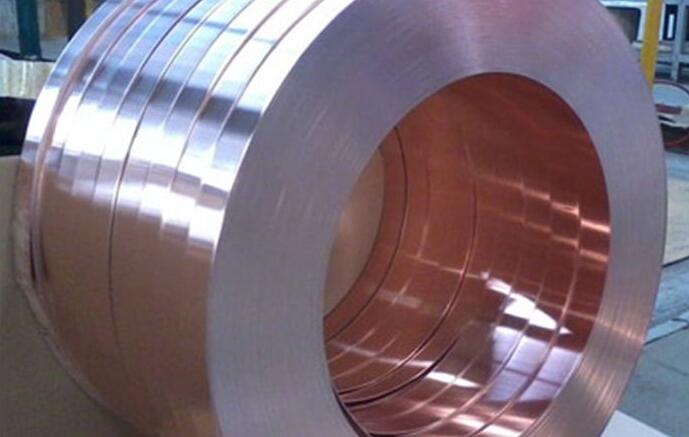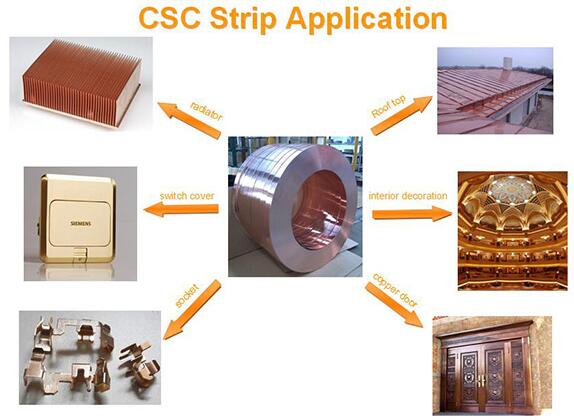When discussing the components in an electrical grounding system, we often hear the terms “copper-clad steel” and “copper-bonded steel” used interchangeably. Though it may seem inconsequential, each term represents a different copper plating process, in which the copper is composite on the steel core. In this post, we consider the question, what is the difference between copper-clad and copper-bonded steel?
"Copper clad" means a material where a core, usually made of steel or aluminum, is covered with a layer of copper, essentially providing the electrical conductivity of copper while utilizing the strength and cost benefits of the underlying material; it's often used in wires and cables where both high conductivity and mechanical strength are needed.
Copper clad is made up of two metals.
How?
There must be a second metal (core material) inside a copper plating to produce a copper-clad. Plus, they are not 100% copper but still offer almost the same properties as Copper and the capability of Copper.
Hence, you can have fusions that consist of:
- Copper and steel
- Copper and aluminium
- And Copper with a few reinforcing materials
The reason the two terms are often used interchangeably is because, on a basic level, they appear the same. Both consist of a steel core and copper exterior.
For use in grounding, both products possess the high tensile strength of steel coupled with the corrosion resistance of copper.
Compared to pure copper, the conductivity of these bi-metallic conductors is lower. To match the current carrying capability of copper, the diameter and copper thickness of bi-metallic conductors are increased. Depending on a conductor's specific application and region, conductivity requirements may differ.

The primary difference between these two types of processes is the way the copper is composited on the steel core.
Copper-bonded steel is manufactured through a continuous electro-plating process of copper over steel core, resulting in a permanent molecular bond between the two materials.
The technique, known as electrophoretic deposition (EDP), creates a homogenous layer of copper over the steel core, regardless of whether the product is a wire, solid conductor or ground rod. The copper layer thickness is measured in unit of [mils].
Copper-clad steel is manufactured by installing two copper strips over a steel core using pressure and heat to form a metallurgical bond. The copper lair thickness is adjusted to the percentage conductivity of pure copper. Most common conductors used in the U.S. are 40% conductivity of copper.

Copper-bonded steel is mainly used in manufacturing ground rods, solid wire and solid conductors. Copper clad steel plate is generally used in manufacturing of stranded and solid conductors. Both copper-bonded and copper-clad steel are used in theft deterrent applications where the conductor is exposed. Both technologies are good alternatives to copper with similar corrosion resistance and higher tensile strength.
The clad plate is combined and processed by the explosion welding, which is widely used in the construction and manufacturing of the pressure vessel, heat exchanger, reactor, various tanks, etc. In order to get resistance to the corrosion, heat or wearing, the stainless steel cladding material (titanium, nickel & nickel alloy, copper & copper alloy, etc) is explosively welded to the relatively inexpensive carbon steel. One side has sufficient strength to the high pressure and the order side has excellent resistance performance to the heat and corrosion, what is more, the clad plate can decrease the constriction cost.
Thickness of clad plate: 0.5 ~ 10mm
Thickness of base plate: 3.5 ~ 190mm
Width of clad plate: 100 ~ 4500mm
Length of clad plate: 1000 ~ 12000mm
Types of forming:
-Single side cladding
-Two sides cladding
-Shape of clad plate
-Upon to customer’s request
Specification of clad plate:
-Stainless + carbon steel
-Copper + Aluminum
-Aluminum + Stainless steel
Applicable standards are generally as listed below.
JIS G 3601 Stainless Clad Steels
JIS G 3602 Nickel and Nickel Alloy Clad Steels
JIS G 3603 Titanium Clad Steels
ASTM A263 "Standard Specification for Stainless Chromium SteelClad Plate"
ASME SA-263 "SPECIFICATION FOR STAINLESS CHROMIUM STEELCLAD PLATE"
ASTM A264 "Specification for Stainless Chromium-Nickel SteelClad Plate"
ASME SA-264 "SPECIFICATION FOR STAINLESS CHROMIUMNICKEL STEEL-CLAD PLATE"